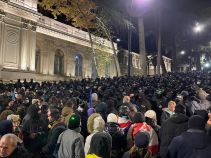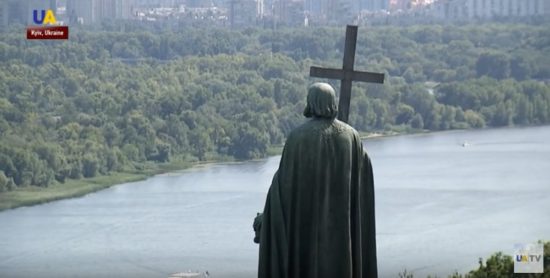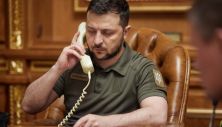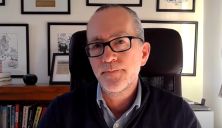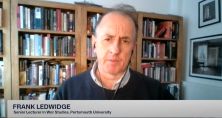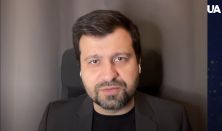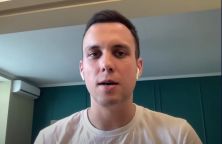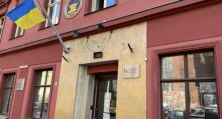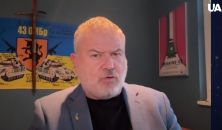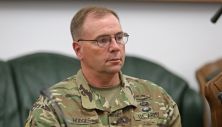The monument to grand prince Volodymyr the Great in Kyiv dates back to 1853. He brought Christianity to the region.
And this is the monument dedicated to the great ruler, in Moscow. It was unveiled near Red Square in 2016. Russian President Vladimir Putin called the Kyivan Prince his compatriot and the founder of the Russian state.
“This new monument is a tribute to our distinguished ancestor, revered saint, statesman, warrior and a spiritual founder of the Russian state,” Putin said.
Putin has also claimed Yaroslav the Wise and his daughter Anne of Kyiv to be Russians during a 2017 meeting with French President Emmanuel Macron.
“Enlightened French people know about Anne, the queen of France. She was the younger daughter of our grand prince Yaroslav the Wise, wife of Henry 1st and she played an important role in the development of France,” Putin said.
In fact, in the times when Volodymyr was baptizing Rus and Anne of Kyiv was the Queen of France, Moscow looked like this. There were no Slavic people living on that territory, only the Finno-Ugric peoples.
“That territory was called Zalissia, or the land beyond the forest. There were Finno-Ugrian tribes living on those lands. Later those lands were colonized by Kyivan Rus. Only in the 12th century were the first principalities created,” Professor of Institute of Ukrainian Archeography and Source Studies Viktor Brekhunenko said.
The myth that Russia is a successor state of the Kyivan Rus was not invented by Putin. This myth originated in the 15th century.
“At the latest, at end of 15th century, when the Russian idea of the unification of all of the former Kyivan Rus under the authority of the Moscow tsar emerged. The Moscovite elites then proclaimed the concept that Russia maintains until this day, that the statehood of Kyivan Rus was inherited by Moscow. As of the dynasty of Kyiv Princes continued there. But it wasn’t so…,” Brekhunenko said.
The myth of the single nation was created in the 17th century and it was used as an excuse for imperial expansion. Muscovites stopped being descendants of the mixture of Finnic, Turkic and Slavic peoples and announced themselves the ‘Great Russians’ — one of the offshoots of the ‘ancient Rus people.’ Ukrainians were hence named ‘Small Russians.’ Soviet historians morphed this myth into the idea of ‘three brotherly nations’ — Ukrainians, Russians and Belorussians.
“In reality, and this is supported by archaeological finds, linguistic data and written data — it was established that Ukrainians as a nation, developed from Slavic roots and when Ukrainian already existed then Russian — did not. It started forming when the Ukrainian state already existed, in the 12th century,” Brekhunenko said.
For centuries Russia claimed that Ukraine is a nation with no historical roots. That supposedly, Ukraine never had statehood and needs external control. Yet Kyivan Rus is Ukraine. It was one of the biggest states in the Middle Ages. The early modern Hetmanate existed as a state for more than 100 years. It had diplomatic recognition in the world. Ukrainian hetmans were treated as equals by kings and khans. Ukraine regaining its independence in 1991 is not a quirk in history or a random event, as Russia claims. It was a natural result of the nation’s struggle for independence and sovereignty.
